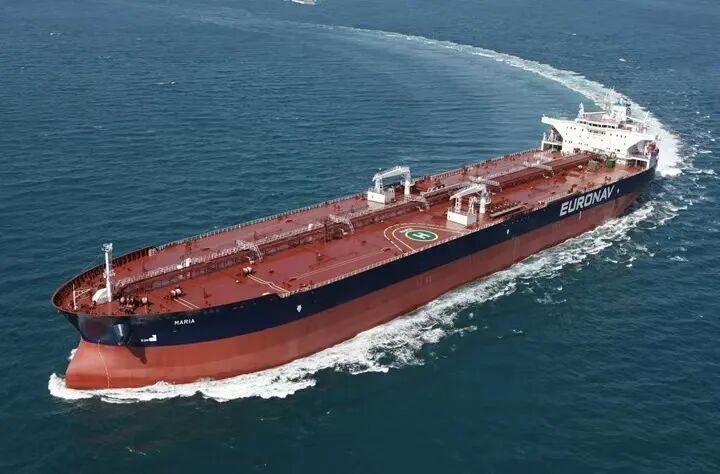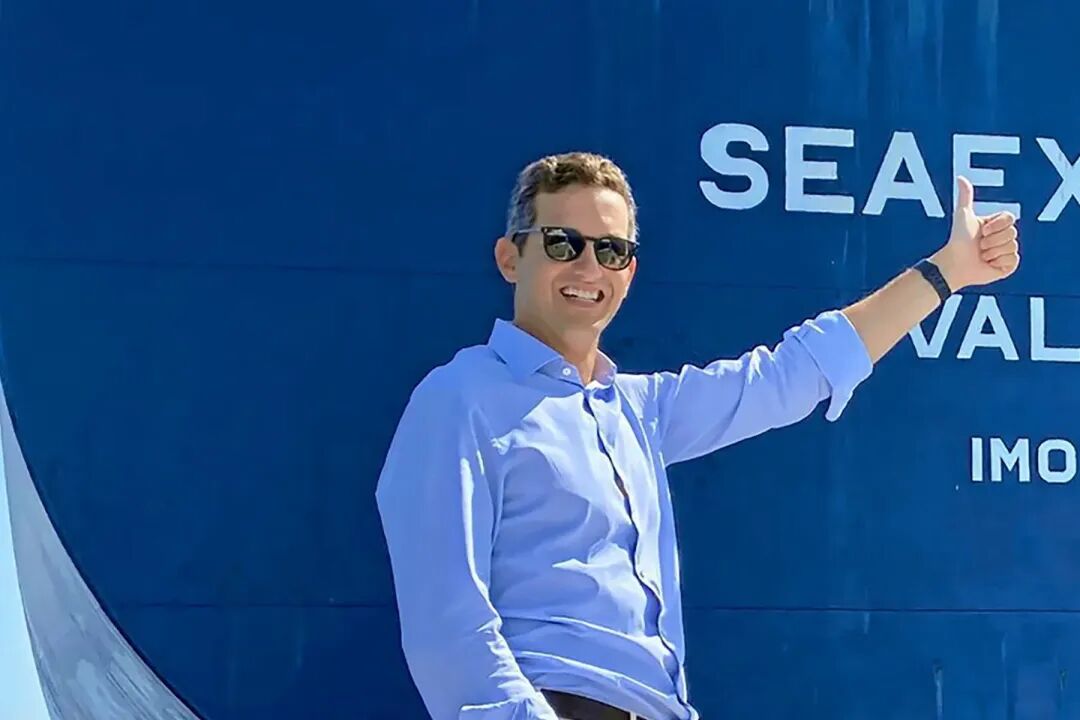Driven by the combined impact of the China–U.S. “port fee war” and sudden geopolitical factors, the VLCC spot market has rebounded sharply. Multiple brokers and investment banks indicate that the latest fixtures for modern tonnage are approaching $99,000/day, with scrubber-fitted ships commanding roughly a $1,200/day premium—pushing composite rates back toward the $100,000/day mark.
On Tuesday, the Baltic Exchange assessed average earnings on the Middle East Gulf–China route at $84,800/day, a 50% jump within a week.
Specific drivers include the following: the United States imposed sanctions on 92 additional parties last week; China introduced a Special Port Fee on U.S.-linked vessels. Together, these moves have effectively split the fleet into two tiers, constraining choices around port calls and discharge, prompting rerouting/repositioning and non-standard ballast legs that compress effective capacity. Late last week, cargo stems bunched and sentiment firmed; owners broadly raised asking levels.
Looking ahead, robust U.S. export demand and continued uncertainty point to further near-term firming in freight rates.

Greek Tanker Owners Unite in Market Optimism
As tanker values climb steeply, attention returns to the sector’s powerhouse—Greek owners.
In recent years, Greece’s traditional tanker operators have staged a collective expansion across conventional tanker segments.
Market chatter suggests Thenamaris, led by Nikolas Martinos, is in talks with—or may already have reached agreement with—John Fredriksen’s Frontline to acquire its entire 18-ship LR2 fleet.
This potential transaction valued at $1 billion, would mark another large-scale move in Greek shipping.
Founded in 1972, Thenamaris is known for prudent management. The company currently controls 92 vessels, including 52 tankers, with a meaningful share in the global products trade. Since 2022, it has realised roughly $1 billion by selling 30 older ships (including 21 tankers, 7 bulkers, and 2 LPG carriers). Combined with three years of elevated tanker earnings, its cash reserves are strong—meaning that, if Frontline’s LR2 fleet is indeed up for sale, Thenamaris would be fully capable of executing an all-cash acquisition close to $1 billion.

On newbuilds, Thenamaris placed nearly $1 billion of orders between 2021–2024, 14 of which were tankers. After taking delivery of its last newbuilding this year, the company’s orderbook now stands at zero.
Given still-high newbuilding prices, Martinos appears to be expanding via secondhand and resale tonnage. Frontline’s LR2 fleet offers exactly that kind of opportunity.
These LR2s, built 2016–2021, are relatively young and competitive in the product trade. Notably, of the 10 new ships Thenamaris took delivery of this year, 8 are LR2s—a deliberate strategic extension.
Greek Peers Are Also Doubling Down
Thenamaris is not alone. According to information complied by Xinde Marine, last year Maria Angelicoussis spent about $2.5 billion acquiring 18 shuttle tankers from Altera Shuttle Tankers (AST); Tsakos Energy Navigation (TEN) in March ordered nine shuttle tankers at Samsung Heavy Industries for $1.3 billion, tied to long-term charters with Petrobras; meanwhile George Procopiou’s Dynacom has ordered up to 64 tankers over the past two years, investing roughly $5 billion.
This collective bet sends a clear signal of Greek owners’ shared view on the tanker market: conventional energy transport still offers substantial upside.
Crude Market Shifts Under China’s Special Port Fee
From a supply-demand perspective, post-Russia-Ukraine trade reshaping has extended voyage distances and added arbitrage routes, sustaining strong product-tanker earnings. With the Trump administration back in office and U.S. policy clearly tilted toward a revival of conventional energy, global products exports and shipping activity have been further buoyed. Against this backdrop, Greek owners—ever cycle-sensitive—are once again backing tankers.
Rather than chasing a new-energy or carbon-neutral narrative, they are using today’s cash-flow cycle and high asset-return window to accelerate fleet expansion.
However, as the China–U.S. port fee regimes take effect this year, the tanker market’s future path is no longer dictated solely by supply and demand—geopolitically driven compliance is becoming a decisive factor.
Following the introduction of China’s Special Port Fee, BRS judges that the measure could upend the crude-tanker market, warning that absent rapid clarifications it could lead to delays, thereby raising fleet utilisation and pushing freight higher.
BRS estimates that potentially 202 to 536 tankers larger than MR1 could be affected, representing approximately 4% to 9% of the active global fleet.
BRS also expects that the larger the ship, the greater the impact. “Given the composition of U.S.-linked fleets and the fact that China accounts for about 25% of global crude imports, we believe the crude-tanker market could be disrupted by the rollout of this Special Port Fee.” Further, more than 80% of China’s substantial crude imports are carried by VLCCs, implying a disproportionate impact on that class relative to smaller sizes.
“In fact, looking at current U.S.-linked VLCC positions, many are operating on routes into China,” BRS notes. It estimates 31 U.S.-linked tankers are already fully laden and signalling for China, and may need to pay the related fees.
Brokers add that some owners may delay discharge until it is clear whether they must pay. Others may choose not to call or not to discharge until charterers agree to cover U.S.-linkage-related costs for their vessels—costs that are not included in the original charter. That could mean tankers waiting at anchorage rather than discharging immediately.
BRS points out that an additional charge of approximately $6 million per VLCC could determine the profitability of an oil trade.
Traders may also resell cargoes to non-China Asian destinations, similarly increasing tonne-miles, as fully laden ships are diverted to other discharge ports.
In summary, the prevailing industry view is that geopolitical turmoil generally leads to disruption and higher freight rates, and China’s new measures targeting U.S.-linked shipping may well reinforce that pattern.
by Xinde Marine News Skye Polly
The opinions expressed herein are the author’s and not necessarily those of The Xinde Marine News.
Please Contact Us at:
media@xindemarine.com
